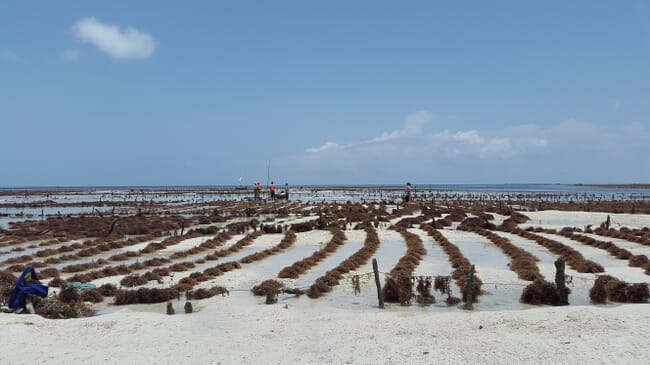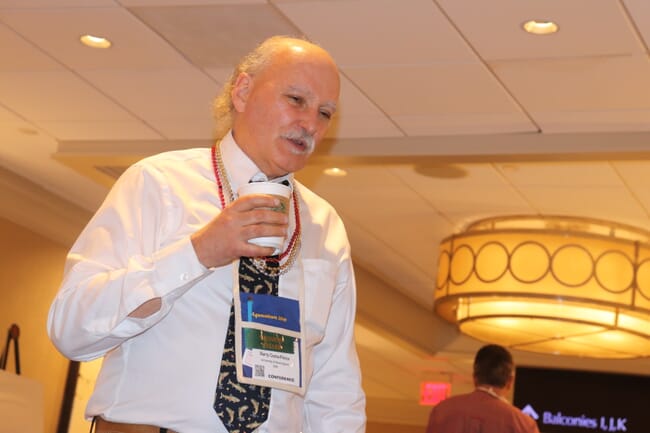The 36-partner, AquaVitae Consortium, has been allocated €8 million from the EU’s Horizon 2020 programme. Over the next four years, the partners will work to increase aquaculture production of low-trophic species in 16 different countries, spread across four continents.
The project’s purpose is to introduce new low-trophic species, products and processes in marine aquaculture value chains across the Atlantic. The five chosen value chains include macroalgae, integrated multi-trophic aquaculture (IMTA), echinoderm species (such as sea urchins), shellfish and finfish. IMTA is a process that farms several species together using waste from one species as feed for another.

The University of New England (UNE) School of Marine Programs and UNE North (the Institute for North Atlantic Studies) will play key roles in developing training and education pathways to support the region’s growing aquaculture ecosystems. UNE is partnering with Nofima - the Norwegian Institute of Food, Fisheries and Aquaculture Research - to fund travel to partner institutions, collaborate in research and develop best practices.

“It’s a tremendous honour to be the only US institution in the consortium,” says Barry Costa-Pierce, executive director of UNE North. “For UNE faculty and students, AquaVitae provides information and interactions with 35 consortium partners in higher education, national research institutes and industries involved in a wide range of aquaculture disciplines such as hatchery production, processing, resource management, economics, environmental monitoring, product development, marketing and consumer behaviour.”
According to Maine’s Department of Marine Resources, there were 672 aquaculture leases covering nearly 800 acres along the coast in 2018 with a total harvest value of $71.75 million. “In addition, new land-based RAS systems for salmon have been proposed with total investments exceeding $500 million,” says Costa-Pierce.
This correlates with recommendations made in the Food from the Oceans report (2017), which highlighted the need to expand low- and multi-trophic marine aquaculture as an ecologically efficient source of increasing food and feed.
Cross-cutting activities
To complete the objectives, 11 case studies will be conducted across the Atlantic, with emphasis on developing new products from low-trophic species (eg macroalgae and sea urchins), optimising production in existing industries (eg shellfish and finfish) and moving towards zero waste and a circular economy in aquaculture (eg IMTA and biofloc).
Some of the cross-cutting activities involve research into biosensors, Internet of Things (IoT), product characteristics, market potential, sustainability, environmental monitoring, as well as conducting risk assessments, analyses of value chains, studying profitability and the legal framework.
Furthermore, the project will implement a multi-actor approach to ensure stakeholder involvement in all phases of the project. Companies act as partners of the consortium together with research institutes and universities, which will also help to establish a durable aquaculture industry and research network around the Atlantic Ocean.
Consortium members
- Nofima (Norway)
- Empresa Brasileira de Pesquisa Agropecuaria- Embrapa (Brazil)
- Universidade Federal do Rio Grande- FURG (Brazil)
- Universidade Federal de Santa Catarina (Brazil)
- Universidade Estadual Paulista Julio de Mesquita Filho (Brazil)
- University of New Brunswick (Canada)
- Danmarsk Tekniske Universitet (Denmark)
- Syntesa ASP (Denmark)
- SPF Ocean Rainforest (Faroe Islands)
- PF Fiskaaling (Faroe Islands)
- Alfred- Wegener-Institut Helmholtz-Zentrum fur Polar-Und Meeresforschung (Germany)
- Verein Zur Forderung des Technologietrasfers an der Hochschule Bremerhaven EV (Germany)
- Matis OHF (Iceland)
- Galway-Mayo Institute of Technology (GMIT)
- University of Namibia (Namibia)
- Miljostiftelsen Bellona (Norway)
- Norut Northern Research Institute AS (Norway)
- Universitet I Tromsoe – Norges Arktiske Universitet (Norway)
- Universidade do Porto – CIIMAR (Portugal)
- Centro de Ciencias do Mar do Algarve (Portugal)
- Rhodes University (South Africa)
- Stellenbosch University (South Africa)
- Biolan Microbiosensores SL (Spain)
- Centro Tecnológico del Mar – Fundación CETMAR (Spain)
- Agencia Estatal Consejo Superior de Investigaciones Científicas – CSIC (Spain)
- Universidad de Las Palmas de Gran Canaria (Spain)
- IVL Svenska Miljoeinstitutet AB (Sweden)
- The Scottish Association for Marine Science LBG (United Kingdom)
- University of New England (United States)
- Primar Aquacultura Ltda (Brazil)
- Scea France Haliotis (France)
- Cartron Point Shellfish LTD (Ireland)
- Algaplus Producao e Comercializacao de Algas e Seus Derivados LDA (Portugal)
- Marifeed PTY LTD (South Africa)
- Wild Coast Abalone (South Africa)
- Bohus Havsbruk AB (Sweden)



